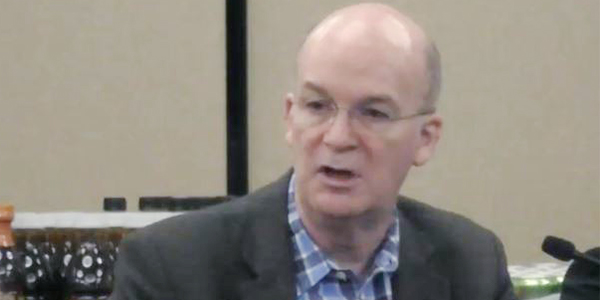By Christen Smith and Rich Heidorn Jr.
WILMINGTON, Del. — Stakeholders on Thursday reluctantly agreed on a path forward for PJM’s proposed “fuel security” initiative after about two hours of debate over whether RTO officials have already decided the outcome.
The Markets and Reliability Committee approved a compromise problem statement and issue charge, adding a requirement that PJM quantify the likelihood of scenarios that might present a risk of fuel insecurity.
Stakeholders also rejected PJM’s proposal to complete work on the issue by the end of the year. Instead, stakeholders will complete their initial research by the end of August and the MRC will set a final deadline for action — if any — at its September meeting.
Members also added language to the issue charge to consider the market responses to conditions that could lead to fuel insecurity and assess whether the current market construct is sufficient to cure the problem.
The compromise was approved by acclamation with one objection.
‘Stress Test’
Critics have complained the initiative is yet another effort to provide additional compensation to coal and nuclear generators, following failed efforts by President Trump and Energy Secretary Rick Perry.
PJM issued a study last year that showed the RTO could face outages under extreme winter weather, gas pipeline disruptions and “escalated” resource retirements. The study, which evaluated more than 300 winter scenarios, was a “stress test … intended to discover the tipping point when the PJM system begins to be impacted,” the RTO said. (See Full PJM Study Makes Case for Fuel Security Payments.)
Marji Philips of Direct Energy said PJM’s proposed December 2019 filing deadline was “suspicious.”
Philips said she agreed on the need for an end date but said the 2019 target “tells me it’s not going to be a meaningful process.”
Bob O’Connell of Panda Power Funds said a “fundamental flaw” in PJM’s proposal is that its analysis made no effort to quantify the risk of the dire scenarios it outlined. He disputed the RTO’s claim that all of its scenarios are “plausible.”
“Many of us … believe that the risk of some of these scenarios is a decimal point, six zeroes and a one,” he said.
O’Connell also disputed PJM’s assertion that it has not identified any solution.
He cited an interview PJM CEO Andy Ott recently gave to Bloomberg in which he said the region’s gas units have 30 to 40 hours of backup fuel and that “what we need them to keep is about five days.”
“That sounds like a solution to me,” O’Connell said. “What’s left for the stakeholders is just fighting over how to pay for it.”
PJM’s Tim Horger said later that incorporating a probabilistic analysis would be “challenging.”
“I don’t know if it’s feasible,” he said.
Jim Wilson, a consultant to state consumer advocates, also expressed skepticism about such an analysis. “Probabilistic analyses usually rely on historical data. [The fuel security analysis] is based on events that have never occurred,” he said, citing an example of a terrorist attack on a natural gas pipeline.
“I don’t think we should focus a lot of effort on this … because it will necessarily rely on speculative assumptions,” he said.
Philips and David “Scarp” Scarpignato of Calpine questioned the value that fuel-secure nuclear plants bring the RTO when they often shut down in advance of a major storm.
Jason Barker of Exelon said the issue of nuclear shutdowns is irrelevant.
“It mixes reliability analysis and PJM’s request to address fuel security,” he said. “If this [inquiry] becomes too broad, we’re setting ourselves up for failure.”
Paul Sotkiewicz, PJM’s former chief economist, said the RTO’s study predicted load shed could result from an “inordinate amount” of plant retirements but failed to consider how the market would respond to so many plant closures.
“None of that analysis has been done,” he said. “The current market design may be able to handle this under Capacity Performance.”
Ott Interview
In the interview on Bloomberg’s “Commodities Edge” show, Ott said the initiative should determine the cheapest way to provide the security of natural gas plants with five days of backup fuel.
“What the vulnerability is … the gas units keep about 30 to 40 hours of onsite fuel. What we need them to keep is about five days. So the point is there’s got to be an infrastructure build if we’re going to use those resources as firm fuel supply resources. … Either larger on-site fuel storage, or we buy more fuel trucks to say they’re on standby essentially to deliver fuel more dependably in the winter.
“The other alternative, of course, is to say what’s that money spend, and is it cheaper than to keep the nuclear plant or keep the coal plant? … It’s going to be an economic decision, and the best technology will win.”
Ott said PJM expects 18,000 MW of coal retirements over the next five years and could sustain as much as 30,000 MW. “If it gets beyond that, we start to look at what are the alternatives?
“A gradual transition we can easily deal with over time. What folks are worried about, and what the U.S. federal government is worried about, is if there going to be an abrupt change.”






